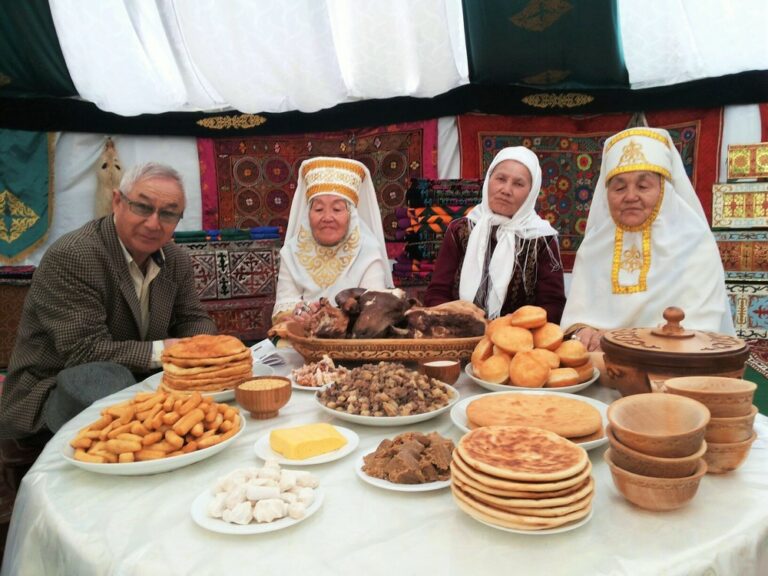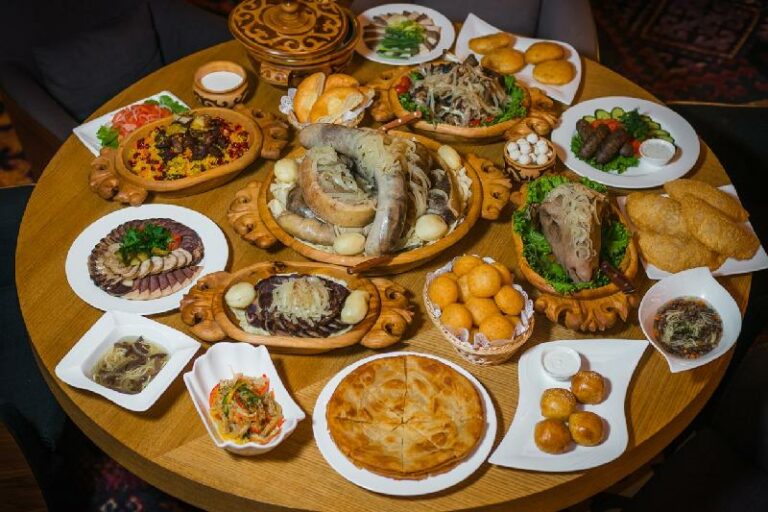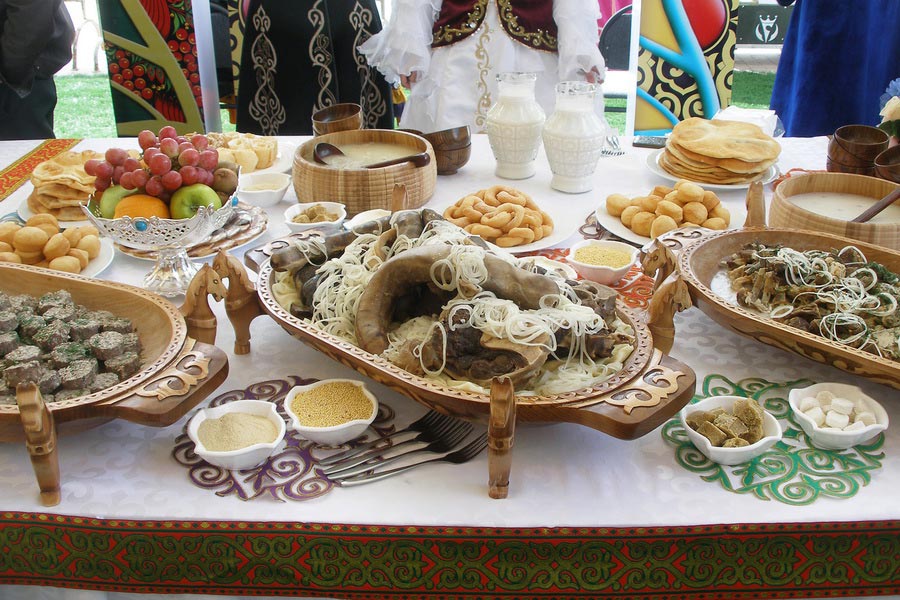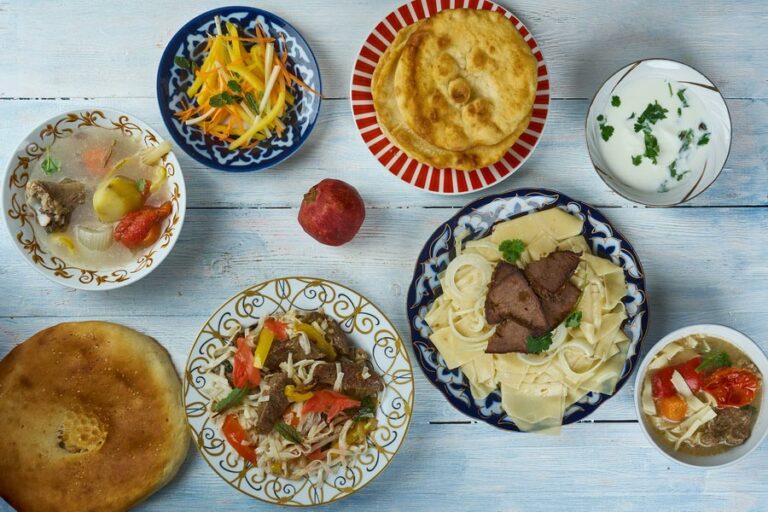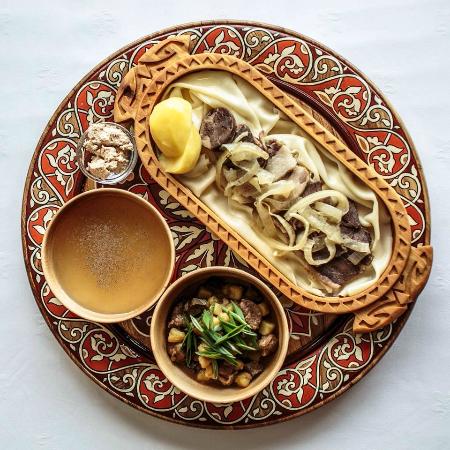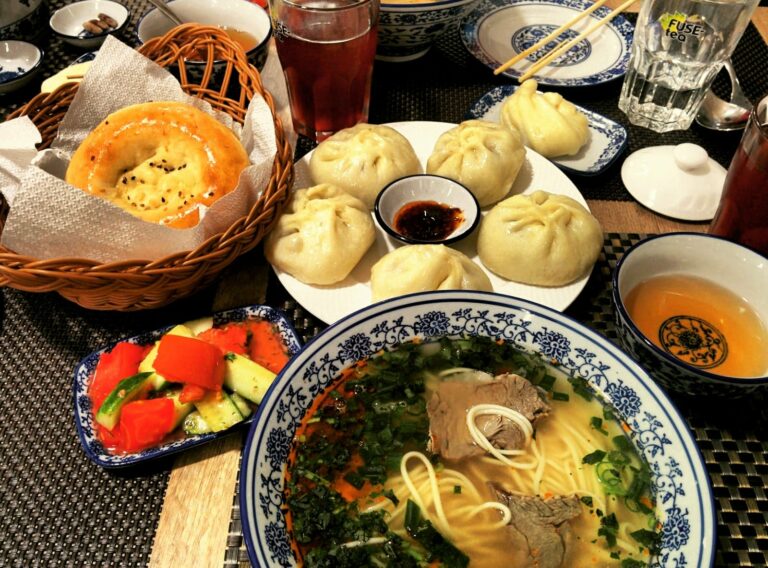Introduction: Exploring Kazakh Cuisine
Kazakhstan is a country rich in culture and history, and its cuisine is no exception. With a blend of traditional nomadic dishes and modern culinary influences, Kazakh cuisine is a true reflection of the country’s diverse heritage. From beshbarmak, a hearty meat and noodle soup, to kazy, a spicy horse meat sausage, Kazakh cuisine is a unique culinary experience that has attracted food lovers from all over the world.
The Geographical Location of Kazakhstan
Kazakhstan is located in Central Asia and shares borders with Russia, China, Kyrgyzstan, Uzbekistan, and Turkmenistan. Due to its strategic location, Kazakhstan has been influenced by a variety of cultures over the centuries. These cultural influences are reflected in the country’s cuisine, which has been shaped by the flavors and techniques of neighboring Central Asian countries.
The Influences of Central Asian Countries
Central Asia is a culturally rich region that encompasses countries such as Kazakhstan, Uzbekistan, Kyrgyzstan, Tajikistan, and Turkmenistan. These countries share a common history and culture, which is reflected in their cuisine. Kazakh cuisine has been influenced by the food traditions of these neighboring countries, and this has resulted in a diverse culinary landscape that is both unique and flavorful.
The Role of Uzbekistan in Kazakh Cuisine
Uzbekistan has had a significant impact on Kazakh cuisine, and this is particularly evident in the use of spices and herbs. Uzbekistan is known for its rich spice markets, and many of these spices have found their way into Kazakh dishes. The use of cumin, coriander, and garlic in Kazakh cuisine can be attributed to the influence of Uzbekistan. In addition, Uzbekistan has also influenced the use of bread in Kazakh cuisine. Bread is a staple food in Uzbekistan, and this has led to the popularity of bread-based dishes such as tandyr nan in Kazakhstan.
The Impact of Chinese Cuisine on Kazakh Food
China has also had a significant influence on Kazakh cuisine, particularly in the use of noodles and dumplings. Noodles are a popular ingredient in Kazakh dishes such as beshbarmak, and this can be attributed to the influence of Chinese cuisine. In addition, dumplings are a staple food in Chinese cuisine, and this has led to the popularity of manti, a type of Kazakh dumpling that is filled with meat and spices.
The Contribution of Other Central Asian Countries
Other Central Asian countries such as Kyrgyzstan, Tajikistan, and Turkmenistan have also contributed to Kazakh cuisine. Kyrgyzstan has influenced the use of dairy products in Kazakh cuisine, and this is evident in dishes such as kymyz, a fermented mare’s milk drink. Tajikistan has influenced the use of dried fruits and nuts in Kazakh cuisine, and Turkmenistan has contributed to the popularity of lamb dishes.
In conclusion, Kazakh cuisine is a reflection of the country’s diverse heritage and cultural influences. The flavors and techniques of neighboring Central Asian countries have played a significant role in shaping Kazakh cuisine, resulting in a unique culinary experience that is both delicious and authentic. From the use of spices and herbs to the popularity of noodles and dumplings, Kazakh cuisine is a testament to the rich culinary traditions of Central Asia.

